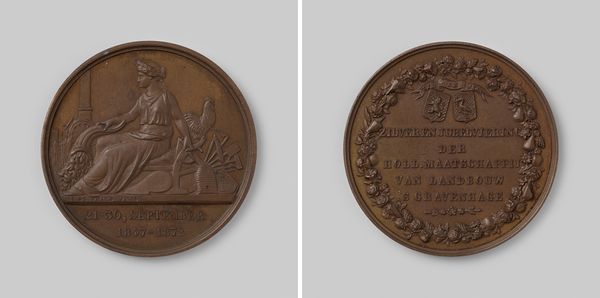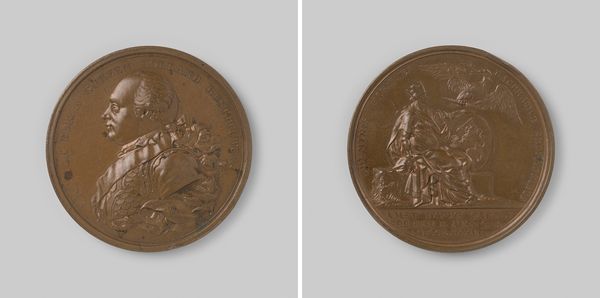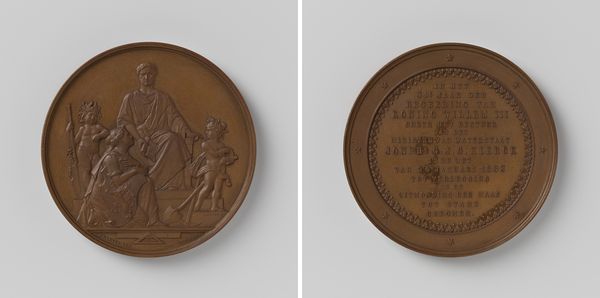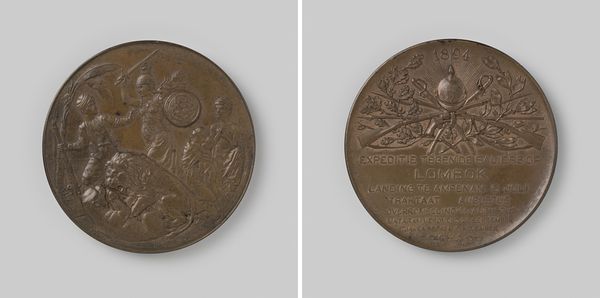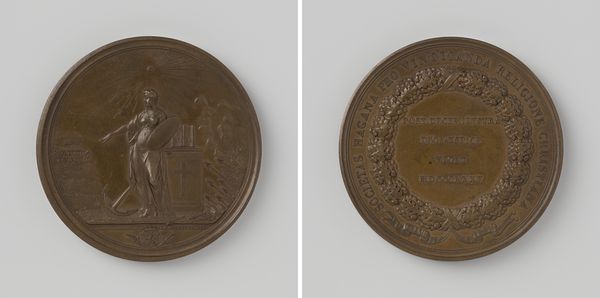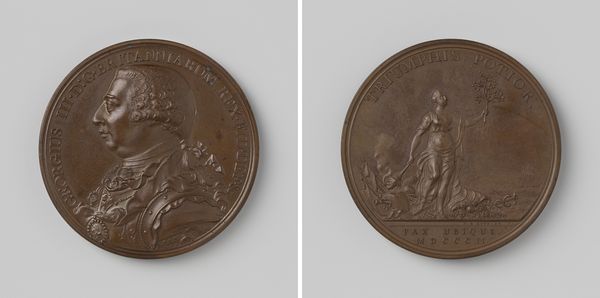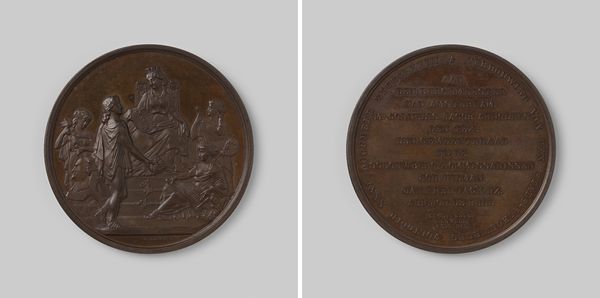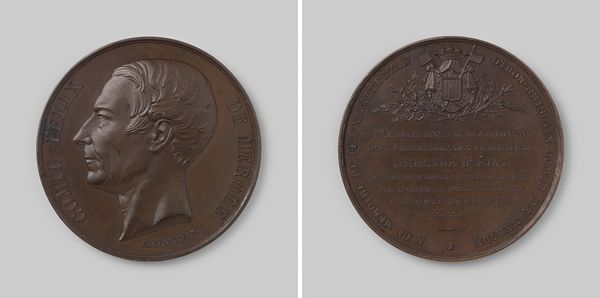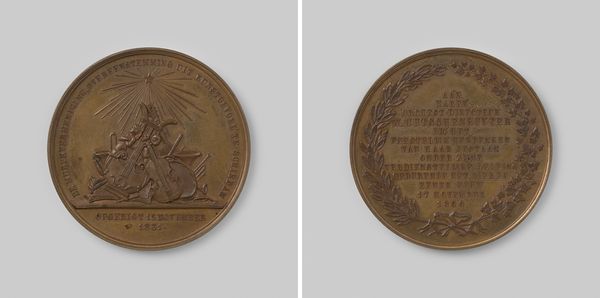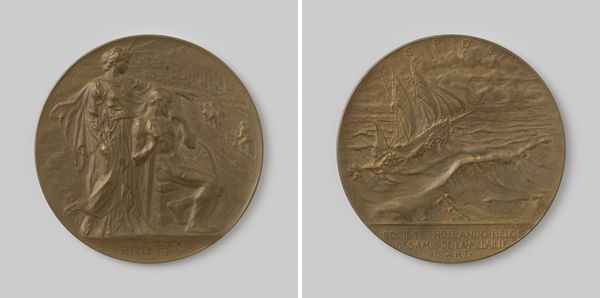
metal, relief, bronze, sculpture
#
allegory
#
metal
#
relief
#
bronze
#
figuration
#
sculpture
#
history-painting
#
academic-art
Dimensions: diameter 5.1 cm, weight 52.18 gr, length 8.7 cm, width 8.7 cm, height 2.1 cm
Copyright: Rijks Museum: Open Domain
Alphonse Michaux made this bronze medal to commemorate the 1902 agricultural, industrial, and livestock exhibition in Batavia, now Jakarta. Bronze is an alloy that is typically made of copper and tin; it is relatively easy to cast, making it a popular choice for commemorative items like this one. The medal has low relief designs on both sides: a female figure and a laurel wreath framing an inscription. The female figure is an allegorical representation of industry, recognizable through the tools she carries. The sharp details of the figure and the inscription required a skilled hand and suggest the mold used for the casting was very carefully made, possibly using a pantograph to transfer the design from a larger model. The exhibition itself was a celebration of Dutch colonial achievements. The medal is not just an art object; it's a material trace of a complex history, embodying power relations, and raising questions about labor and the circulation of goods. Considering these social contexts alongside the object’s making helps us understand its full meaning, challenging traditional distinctions between fine art and craft.
Comments
No comments
Be the first to comment and join the conversation on the ultimate creative platform.

